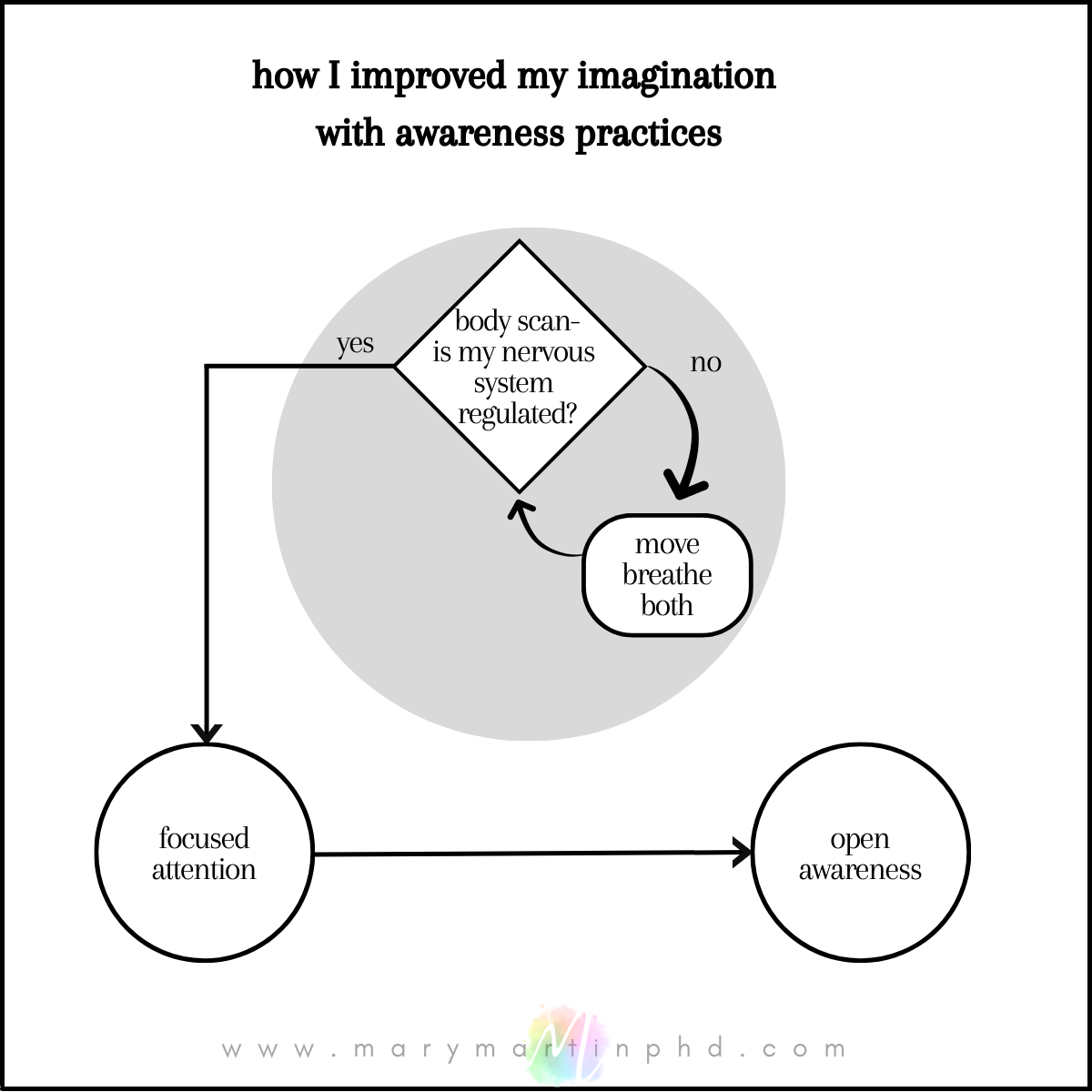By Mary Martin, PhD; Mindfulness Educator and Author
Also posted on Foresight Matters Medium Channel.
As a mindfulness practitioner and teacher, I tend to notice things about my own experiences. I wasn’t a pessimist or optimist prior to IFTF’s Imagination Leadership Training, despite research that says optimists tend to be happier, healthier, and live longer. Just as important, I didn’t spend any time pondering the connection between imagination and optimism. In fact, most of my time is spent non-judgmentally observing, without striving for any particular experience.
However, my active membership in the inaugural cohort of Urgent Optimists, IFTF’s community for collective imagination, has increased my capacity for and my interest in optimism, and I now have a palpable sense of boosted well-being in addition to an expanded ability to think creatively and imagine farther out into the future.
After months of playing with scenarios, researching signals, creating a Ten Year Forecast for The Future, preparing for social simulations, and choosing to imagine positive futures rather than shadow ones, I noticed I had integrated my mindfulness practices into my imagination training. Vivid, multi-sensory experiences came fairly easily. They were more expansive, creative, and optimistic than when I started the training. Wanting to share what I’d learned about the imagination-awareness connection, I volunteered to teach a session to IFTF’s Urgent Optimists community called “Awareness Practices for Social Simulations.”

Here are the four practices I recommend for vividly imagining positive futures.
1
Determine the State of Your Nervous System. The Body Scan practice, which supports the multisensory experience that’s part of simulations and time travel, also does something more fundamental: it tells you if you’re best-positioned to do your imagination work. Your capacity to imagine positive alternative futures is contingent on a regulated nervous system.
This practice develops the habit of noticing the sensations that arise and fall away in your body all day long. It brings your attention to your present state, which tells you whether time travel or imagining futures is a good idea at the moment.
Instructions:
Set a timer for two minutes. With eyes open or closed, beginning with your feet and moving up and around, scan your body inside and on its surface for any sensations present. Moisture, temperature, pressure, heart rate, restriction, gravity, circulation, weight, contact points . . . there are so many things to notice at any moment in and on your body.
Scanning your body regularly creates a brain that predicts scanning your body regularly. This practice introduces you to the myriad feelings and sensations that occur in and on your body that you don’t notice, but that affect your perceptions, thoughts, and actions. Two minutes is enough time to get a feel for the state of your nervous system, which you bring with you when you do your mental time travel.
When it’s time for mental time travel, you just might be so accustomed to checking in with your body that doing so becomes part of your imagination protocol. Brain activity of imagined felt experiences is similar to that of actual felt experiences, resulting in imagination being called a “neurological reality.” With practice, your mental activity becomes a full-body experience.
If you discover that you’re not calm and grounded after your Body Scan, the following practice will be helpful. If you discover you are calm and grounded, proceed to the practices for convergent and divergent thinking.
2
Regulate Thy Nervous System. Stress and distress are associated with rigidity of thinking. When your nervous system isn’t regulated, and you’re somewhere on the spectrum between checking out (hypoarousal) or panicking (hyperarousal), many functions suffer, including creativity, focus, and memory. Also, mistakes and being outside your comfort zone are scary, so trying new things isn’t at the top of your list, and imagining positive futures is challenging.
On the other hand, when you’re in a safe and brave space, your ability to weigh options and think clearly is high, and you’re able to be optimistic about the future.
Nervous system regulation can be achieved in many ways, with the quickest and easiest involving breathing and movement. Changing your state via the breath if you’re agitated and need to down-regulate might look like 4–7–8 breaths (inhale through the nose for 4 seconds, hold for 7, exhale for 8). And if you’re feeling foggy, numb, and starting to check out, take a brisk walk and attend to what’s happening with all your senses. Engage them. Name 5 things you can see, 4 things you can hear, 3 things you can touch, 2 things you can smell and 1 thing you can taste.
The caveat here is that in order to be able to regulate your nervous system, you have to have a practice, like the Body Scan, for noticing your state as well as a practice for shifting your state. If you don’t have that, you have your willpower and self-control as your resources. And if you’re already upset, that’s just about as challenging a position as you can be in.
Practice changes the brain’s predictions — that’s what neuroplasticity is. The more you practice something, the more your brain will predict doing it, and the easier it becomes to do it. Your best-case scenario is to create a brain that predicts noticing your state as well as doing something skillful with what it noticed. Absent practicing when not much is going on — at a low-stakes time in a low-stakes environment — your brain is going to do what it always does when you get dysregulated. You’ll forever fight your maladaptive patterns if you don’t develop different ones, and the only way you do that is through practice.
The first two techniques set you up for the final two — convergent thinking and divergent thinking — which train the mind to imagine positive futures by cultivating creativity.
3
The Focused Attention practice supports convergent thinking — narrowing things down, finding a skillful path, identifying the best solution to a problem, and/or synthesizing the raw material from your memory into a coherent mental representation. For this, you need a brain that can focus, which doesn’t come naturally to us — we have to work at it and practice it.
At least at first, it’s best to practice somewhere you feel safe, otherwise your mind and body will prioritize threat detection and preparation, which brings you back to having to regulate your nervous system.
Here’s what Focused Attention looks like…
Instructions:
Set a timer for two minutes. With eyes open or closed, choose a neutral point in your experience. Maybe it’s your nostrils as your breath goes in and out. Maybe it’s your feet. Again, this is something in your experience, so not an image or a word.
Your mission is to keep your attention on that neutral point, which we call the anchor point. When your attention wanders, and it will, many times, bring it back to the anchor point without fanfare. Treat yourself with compassion and don’t judge your mind or your ability to focus. That’s it! Focus, lose focus, bring it back. Repeat.
4
Where Focused Attention trains the mind on one thing, Open Awareness (also called Open Monitoring and Choiceless Awareness) is the opposite. It trains the mind to allow whatever arises, without labeling it, judging it, grasping at it, or trying to push it away, and there’s no anchor involved. Open Awareness supports divergent thinking — the free flow of ideas in an unorganized fashion. This is the stuff of daydreaming, where the possibilities are endless and there’s no need to restrict them. They don’t need to make sense or be realistic and there are no rules around what you can combine.
The thoughts and images that arise when you’re not paying attention come from somewhere, though; they come from your memory. Therefore, if you want to nurture your ability to imagine positive futures, you want to stock your memory with moments of beauty, awe, gratitude, and connection. Savoring those moments for a minute, either when they’re occurring or later, has even been shown to make us more creative.
As with Focused Attention, being somewhere you feel safe is crucial. Setting aside time and space to not focus on anything in particular is supportive of the brain’s default mode network, also known as the imagination network.
Instructions:
Set a timer for two minutes. With eyes open or closed, allow all phenomena in and around you to come and go, without labeling it (that’s a different practice) or judging it. Perhaps most importantly, you’re not thinking about what comes and goes — you’re not creating a story around the sound you hear or the memory that arises. Instead, you simply (!) allow everything to come and go. Resist the urge to grasp at what you deem “positive” or push away what you deem “negative.” Aim to not “deem” anything. Experience and observe.
Now, if you also want to stock your memory with images, sounds, and sensations you find uplifting, do this at the beach or in the woods or wherever else you cherish. The fundamental practice, however, is to create a brain that simply allows.

At some point, Focused Attention and/or Open Awareness might become the practice you use to regulate your nervous system. That’s kind of next level, but it’s by no means a goal. The more regularly you practice these four awareness techniques, the more easeful it will eventually become to pay attention, open the mind to wonder and wander, and create multi-sensory imaginings.
IFTF Foresight Essentials
Institute for the Future (IFTF) is the world’s leading futures organization. Its training program, IFTF Foresight Essentials, is a comprehensive portfolio of strategic foresight training tools based upon over 50 years of IFTF methodologies. IFTF Foresight Essentials cultivates a foresight mindset and skillset that enable individuals and organizations to foresee future forces, identify emerging imperatives, and develop world-ready strategies. To learn more about how IFTF Foresight Essentials is uniquely customizable for businesses, government agencies, and social impact organizations, visit iftf.org/foresightessentials or subscribe to the IFTF Foresight Essentials newsletter.